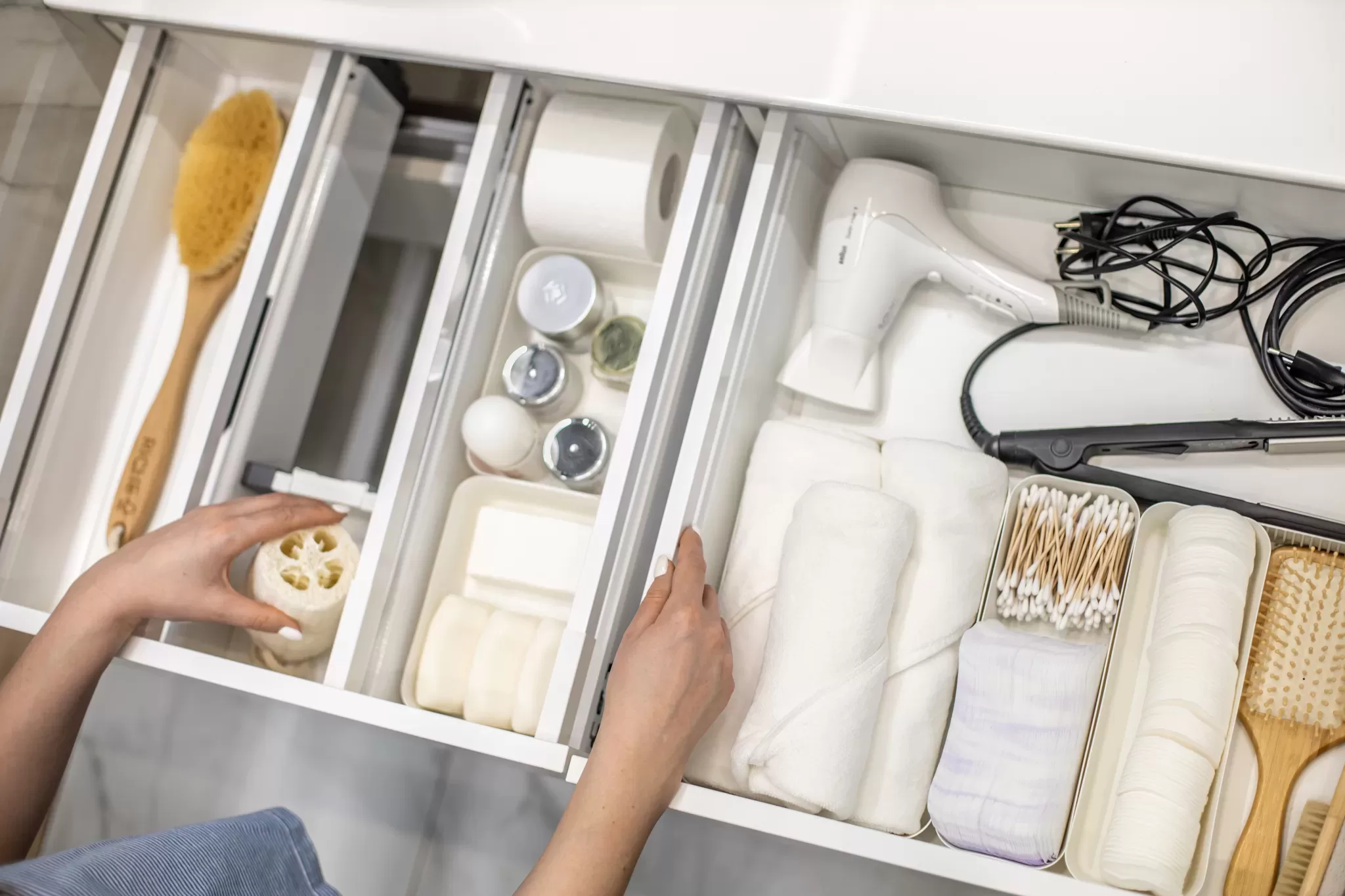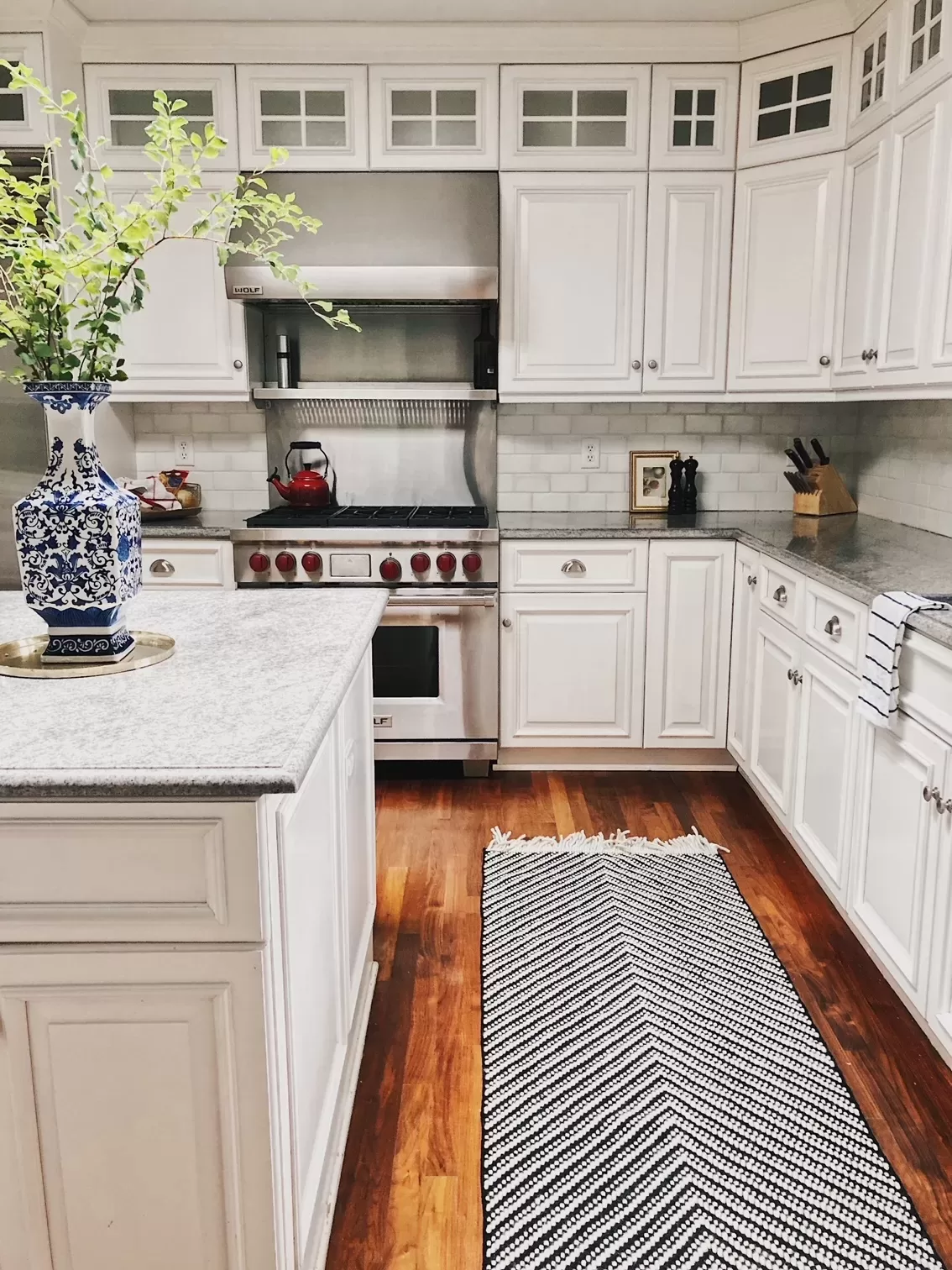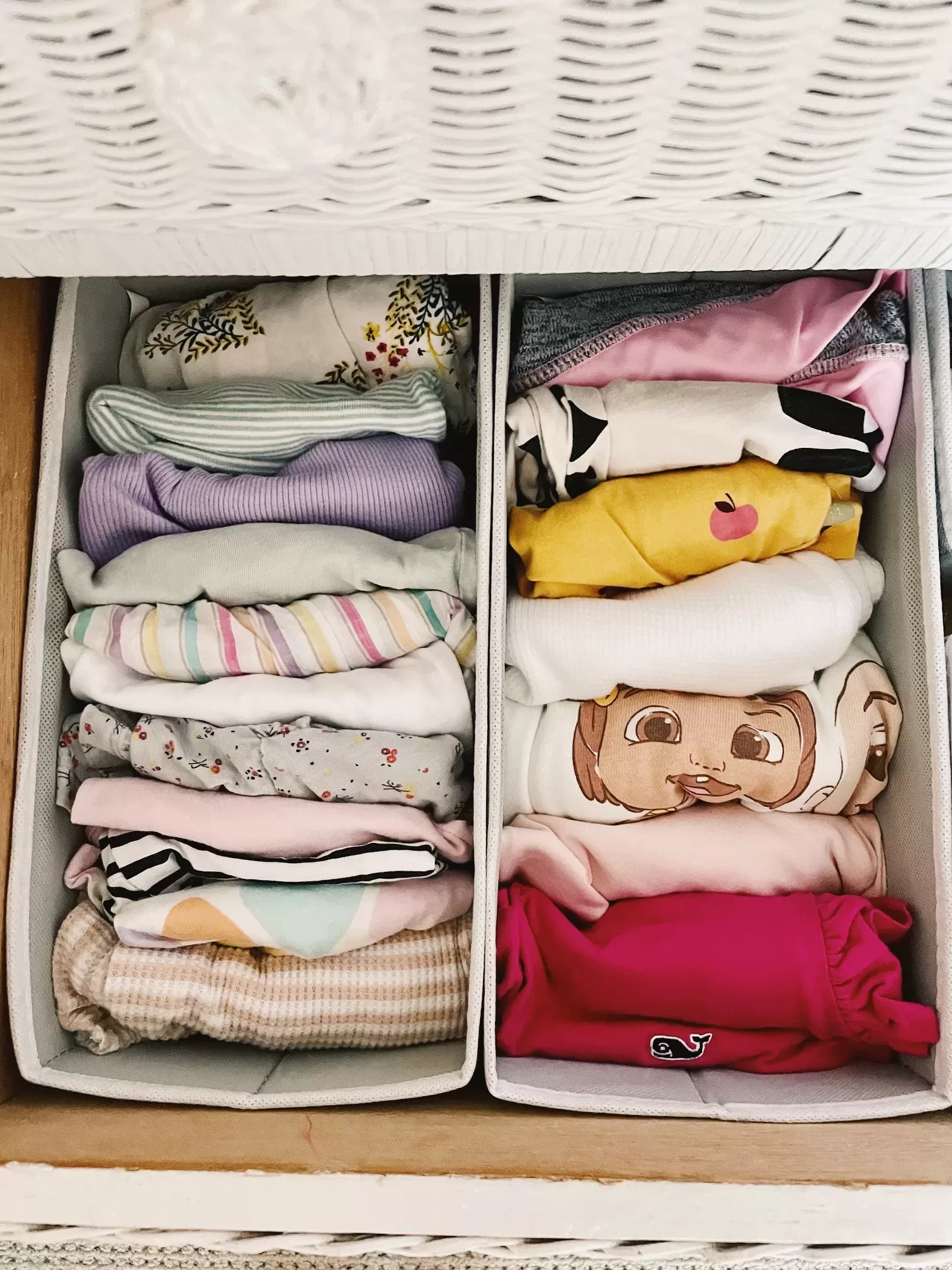9 Easy Tips to Help You Start Decluttering When Overwhelmed

Wondering how to start decluttering when overwhelmed? If you’re faced with a large decluttering project, or you’ve never purged your home before, it can seem like a daunting task to go through everything you’ve ever owned and decide what you need and what you don’t.
I am a habitual declutter-er, but I wasn’t always this way. Prior to our current home, my husband and I moved every 1-2 years, so it felt like we always got a chance to get rid of unnecessary stuff when we packed up our home. But after living in the same home for five years, and adding three kids to the mix, I suddenly felt like I was going to drown in all my stuff.
So, I went through our house, little but little, and got rid of everything we didn’t need, like, or want.
Nowadays, my family knows that if they leave something on the counter for longer that a few days, there’s a good chance it’ll get re-homed (i.e. donated or thrown away). I’m always re-evaluating our stuff: getting rid of what we don’t need, donating old toys, or tossing broken items.
This “maintenance mode” is necessary so I don’t wind up back in a pile of overwhelming clutter, but to get here, you first need to get rid of all your excess stuff.
If you’re feeling paralyzed by the big job in front of you, or by the decisions over what to keep and what to ross, here are my best tips for decluttering when overwhelmed. These are things I’ve learned from doing my own decluttering, and listening to way too many organizing podcast episodes. Yep, there are organizing podcasts (more in tip 4!).
How to Start Decluttering When Overwhelmed

1. Start small
The number one way to begin decluttering when overwhelmed is to start small. Come to terms with the fact that you’re not going to declutter your entire home in one day, and commit to small, sustained progress instead. It might take you weeks, months even, to declutter your entire space, but by making a small amount of progress over time, you’ll get to where you want to be.
2. Just start
If you don’t know where to start the decluttering process, you’re probably overthinking your strategy. You don’t have to pick the perfect room or have a defined decluttering strategy. Pick any place, and just start. Open the drawer in front of you, or the closet in the room you’re standing in, and start there.
If you don’t have hours to dedicate to decluttering, work with what time you do have. Dedicate 15 minutes, or an hour, or whatever time you have, to going through one or two areas of your home.
3. Stick to one area at a time
Once you start decluttering an area, finish the job before moving onto the next room. I don’t mean, like, once you start decluttering the playroom, you have to declutter the entire thing. I mean, once you start decluttering a toy bin in the playroom, finish that bin before going to declutter the playroom closet.
This is a great strategy because finishing an area will allow you to see progress (even if it’s just a single drawer!) and give you a sense of accomplishment, which will help fight that feeling of overwhelm.
4. Make a decluttering to-do list
Getting things out of my head and down on paper always makes me feel better when I’m overwhelmed, whether it’s about my schedule for the day, or my kids’ schedules, or the clutter in my house.
So, if the simple thought of decluttering is making your brain want to shut down, start a to-do list. Write down the major areas of your home you’re planning to declutter in the immediate future (i.e. the next two weeks).
Get granular about you list. I.e., write down “Kitchen junk drawer,” “kitchen appliances,” “coffee mugs,” “pantry,” “linen closet,” “hall closet,” “kids schoes,” instead of “Kitchen,” “bathroom,” etc. This way, you’ll have a specific task to tackle each time you look at your list, and you’ll be able to check things off faster (who doesn’t love checking things off a to-do list?)
Then, write down a list of spaces you’d like to declutter eventually, but won’t get to right away. This gives you a rough plan for your project, and lessens your overall mental load.

5. Ask yourself 4 decluttering questions
If your sense of overwhelm comes from not knowing what to do with the items you’re decluttering (i.e. should it stay or should it go?), then you need to arm yourself with a list of questions that will help you come to a conclusion.
Those questions are:
- Would I buy this item again today? If no, get rid of it.
- Do I have another item that serves this purpose? If yes, get rid of it.
- Have I used/worn this item in the past year? If no, get rid of it.
- Would I replace this exact item if I knew it was gone? If no, get rid of it.
- Does this item work, and if not, will I fix it in the next few days? If no, get rid of it.
- Can I replace this item in under 20 minutes, for under $20? This is a good tie breaker smaller items that can pile up bcause they’re easy to store. If you’re on the fence about something, but you can replace it in under 20 minutes for under $20, you can toss it.
6. Schedule a decluttering session.
If you feel like you never have time to just start, set a time and date to start the process. Setting aside an hour and putting it on your calendar can give you the momentum, the headspace, and the free time to begin.
7. Declutter first, organize later
Decluttering and organizing don’t have to happen in tandem. In fact, it’s often better if they don’t.
For one, you can declutter faster if your sole mission is to eliminate things you don’t need in your house.
Then, once you know what you’re keeping, you can implement new systems, and buy any supplies/hooks/containers, etc. that will help you get organized.
8. Designate three piles
When you set out to declutter, it’s also a good idea to create three areas, bins, or bags, for the items you won’t be keepings. One for donations, one for things you’ll sell, and on for items you’re throwing out or recycling. That way, you can jump right into you decluttering task and be able to immediately put an item into the proper pile or container, without having to go back and sort the discard pile later.
9. Listen to an organizing podcast
If you need specific tips about decluttering certain area of your home, or letting go of material things, or want to try a decluttering challenge of some sort, try an organizing podcast.
There are a ton of them, and they usually have very specific strategies and ideas for getting a handle on your home.
A few I love:







3 Comments